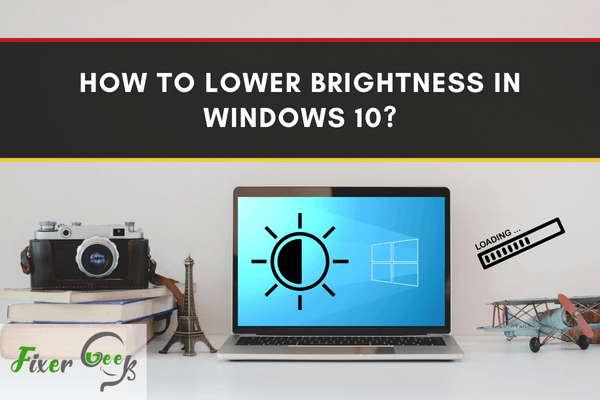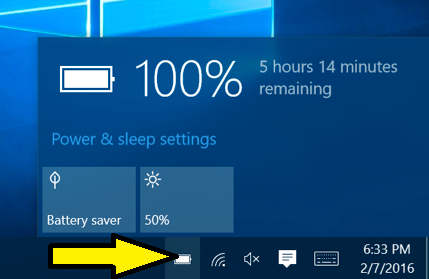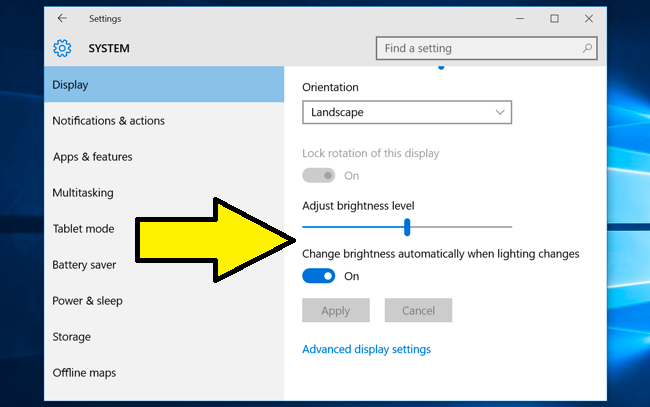Are you having trouble seeing your screen? Don't worry. It's more than likely that your brightness setting is set to a level that is too bright (duh!). I was having trouble with my brightness in Windows 10 and found a quick way of lowering it.

Have you ever experienced working on your laptop with just a little battery left and still a lot of tasks left to do? Just so you know, you can lower your laptop screen’s brightness to conserve energy. In that way, you can buy some time in saving your important work.
Using the steps below, you can even set your laptop to display brightly when it is plugged in and dim the screen during battery-mode. This option is called ‘power plan’, which is the quick or automated adjustment of the display’s brightness and duration.
How To Lower Brightness In Windows 10?
Lowering the brightness is the same process as increasing it, but only in reverse. When you are having a bright light source, like the light bulb in your room, for example, you need to increase the screen’s brightness.
Also, when you are working on your computer in the dark, lessening the brightness is recommended. Through the following steps below, you can adjust the screen’s brightness at your own will or automatically using the power plans.
Adjusting Brightness Manually
- On your keyboard, find the keys with symbols that are related to brightness. One key is for increasing and the next key is for decreasing. The symbols can look similar with only a few minor differences.
- The said keys are usually found on the first row of the keyboard. To access their secondary functions, that includes the adjustment of brightness, look for the key ‘Fn’ and press it while pressing either of the keys for brightness adjustment.
- If you have difficulties, you can adjust the brightness on the Desktop screen. On the lower-right corner of the taskbar, locate the battery symbol. Click on it.
- A small window will pop up. Click on the ‘sun’ symbol and the percentage below indicates the level of brightness your screen is currently displaying. Each tap will give you an increment of 25 percent and once you tap more after reaching 100 percent, you will go to the most minimum allowable brightness.

- If you want finer increments and quick decrements, open ‘Settings’ from the Start menu.
- Choose ‘System’, and then, choose ‘Display’.
- On the ‘Adjust brightness level’ slider, you can drag the pointer to adjust the brightness in a more precise manner.

Adjusting Brightness On Different Settings: Battery-mode Or Plugged-in
- Open ‘Control Panel’.
- Select ‘Hardware and Sound’ and then, select ‘Power Options’.
- Click on ‘Change plan settings’ next to the existing power plan.
- On the window, you have different configurations for both ‘On battery’ and Plugged In’. You can make adjustments accordingly.
- For example, the current power plan you are changing is ‘Balanced’ and you configured the brightness of the screen during ‘On Battery’ mode as the minimum and for ‘Plugged In’ as maximum. This means that each time you are charging, the screen’s brightness is at 100 percent and when you are using battery only, the screen’s brightness is at 0 percent, given that the power plan used is ‘Balanced’.
- You can configure other power plans as well. They can be used as shortcuts for a different brightness level of your display and its duration.

Summary: lower brightness in Windows 10
- Open the Settings app.
- On the main Settings page, click on System.
- Click on "Display" in the pane on the left.
- Click and drag the "Adjust brightness level" slider to the left or right. This setting controls how bright or dim your display will be when you're not using Battery Saver mode.
Conclusion
Adjusting the brightness level is important to conserve energy for your battery. Additionally, the procedures mentioned above let you adjust with ease to minimize eye strain.